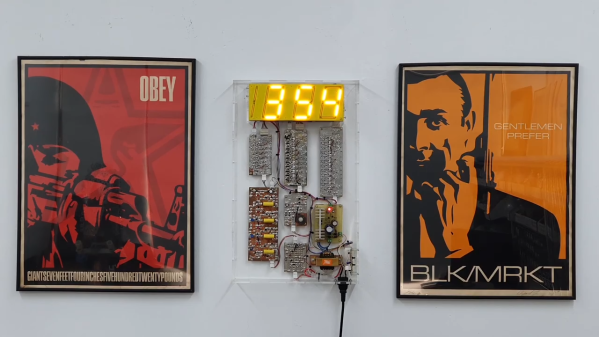When you’ve got time on your hands, doing something the hard way can be therapeutic. Not that the present situation and the abundance of free time that many are experiencing has anything to do with [Leo Fernekes] all-transistor digital clock build, which he started a year ago with his students. But if you’ve got time to burn, this might be a good way to do it.
[Leo] says one of his design goals with this clock was to do it with the technology commercially available in 1960, which means relying completely on discrete components. And he and his students managed to do just that, with the exception of the seven-segment displays, which were built from the LED filaments from some modern light bulbs. Everything else, though, is as old school as it gets, and really underscores all the complexity that gets abstracted away from timekeeping with modern chips. The video below covers each module in detail, from the Schmitt trigger that cleans up the 50-Hz line frequency to the ring counters and diode matrices used to drive the display. We found the analog stair step dividers used to bring the line frequency down to a more usable pulse train particularly interesting. That clever bit of engineering saved 10 transistors over what would be required for traditional flip-flop dividers.
There’s a lot to learn from this design, and the execution is great too – we’re suckers for Manhattan-style builds, of course. Hats off to [Leo] and his lucky students on a great build.
Continue reading “Tell Time Like It’s 1960 With This All-Transistor Digital Clock”











